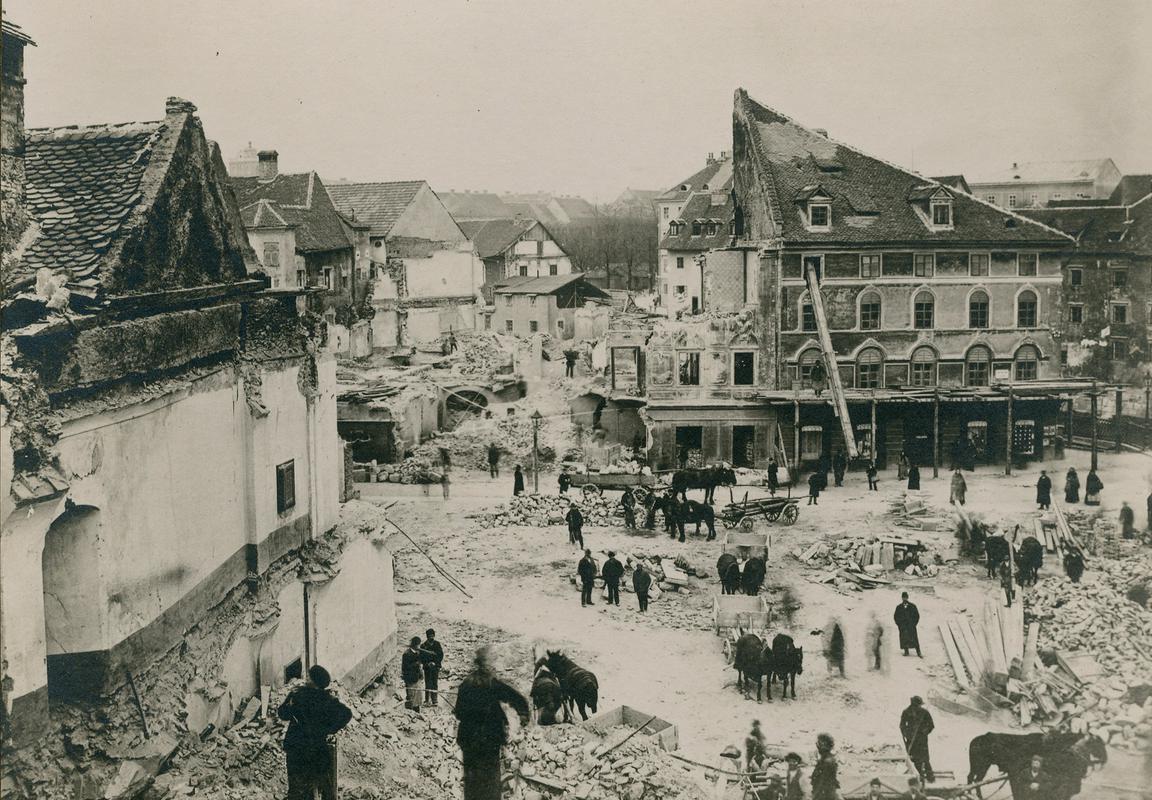
On Easter Sunday, on April 14, 1895, Ljubljana and its surroundings were affected by a violent earthquake which damaged practically all buildings, completely ruined a lot of them, and brought about a breakthrough in the further development of the city. The entire monarchy sympathised with the inhabitants of Ljubljana, and the news of the catastrophic consequences spread to other countries and even across the ocean. The earthquake however encouraged radical changes in architectural planning of the city, and judicious earthquake construction.
What happened on that day, precisely120 years ago? The Easter holidays were peaceful, without any dark premonitions. The weather was changeable, it rained a lot, but on Sunday Ljubljana basked in the sunshine. And then the night came. "Ljubljana never knew such a terrible night as the night of Easter Sunday. At 17 minutes past 11 a terrible earthquake awakened the inhabitants of Ljubljana. It was an indescribably awful moment, everything was dancing around and shaking, the plaster was falling off, loud clatter of chimneys falling from roofs could be heard, and the ground itself was swarming and thundering," the Slovenec newspaper described the impressions of the inhabitants on April 17, 1895.
The earthquake was felt as far as Vienna, and Florence
The epicentre of the earthquake was, according to the Environmental Agency data, 16 kilometres below the surface, and its magnitude reached 6.1. It caused the biggest damage in the city of Ljubljana, while the aftershocks could be felt as far as Vienna, Split, and Florence. More than 100 aftershocks followed in the next ten days.
At the time, Ljubljana's population was some 31,000, with around 1,400 buildings. Total panic erupted.
Ana Svenšek; Translated by G. K.

































































